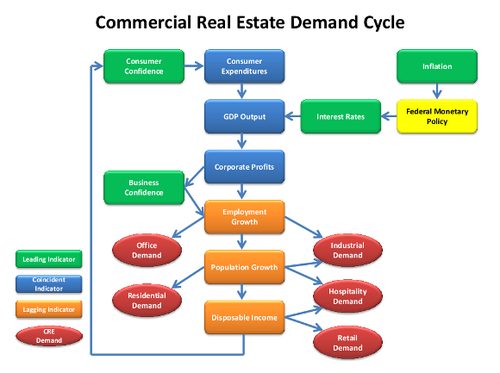To a developer, affordable housing means lower rents than a market-rate project, lower net operating income, and thus lower returns on their investment. Accordingly, without any outside incentive a developer has little motivation to build affordable housing.
Unfortunately, the need for affordable housing is significant. According to the National Low Income Housing Coalition, “in 2013, for every 100 extremely low income renter households, there were just 31 affordable and available units.” The Coalition then noted, “in no state can an individual working a typical 40-hour workweek at the federal minimum wage afford a one- or two-bedroom apartment for his or her family.”
Recognizing the need for affordable housing, and the fact that few developers would pursue these projects when market-rate developments offer a higher return, the federal government looked for ways to make affordable housing projects financially attractive to developers. The Low Income Housing Credit (LIHTC) program is one of those ways.
This article details how the program works, including:
- How the federal government allocates credits to the states
- How state agencies administer the program
- The application process for developers
- Why investors purchase the credits (and why developers sell them)
- Project rent and income restrictions
- Compliance periods
- How the credits are calculated, and
- How they are claimed
Let’s start with the big picture.
What is the LIHTC Program?
The LIHTC was created as a part of the Tax Reform Act of 1986, is found in Internal Revenue Code § 42, and was designed to incent developers and investors to create and operate affordable housing. Under the program a developer receives federal income tax credits over a 10-year period in exchange for (i) acquiring, rehabbing or newly constructing rental housing for low-income households, and then (ii) operating the project under LIHTC guidelines for a certain compliance period.
Unlike a tax deduction, which only reduces taxable income, the LIHTC credits offset dollar-for-dollar a party’s tax liability.
Developers sell the right to use these credits to investors who want to reduce their federal taxes. The investor’s payment for such right, its “capital contribution” to the project, reduces the developer’s need to use other financing. This then reduces the developer’s debt-service costs, allowing the development to be financially appealing even with below-market rental income. This formula has been successful in attracting private dollars to create affordable housing.
According to the U.S. Department of Housing and Urban Development (HUD), as of 2016 the LIHTC program was authorizing the use of $8 billion in tax credits annually, and has resulted in the creation of approximately 2.8 million affordable housing units.
Types of LIHTC Projects
As with all development, the opportunity to create affordable housing doesn’t always present itself in the same manner. Sometimes a developer has to build a project from scratch. Sometimes they find a suitable existing building, but need to acquire and modify it to accommodate rental units. And sometimes a developer owns an existing building, but needs to rehabilitate it to offer affordable units.
The LIHTC can be used for all three situations: new construction, acquisition and rehabilitation, and rehabilitation of a property already owned by a developer.
It should be noted that LIHTC can also be used to preserve projects funded or supported with other affordable housing programs, including, for example Federal Housing Act (42 U.S.C. § 1437f) Sections 8 (Rental Voucher Program), 236 (Rental Assistance Program), 221(d)(3) (Rent Supplement Program), 202 (for elderly households), 515 (for rural renters) and 514/516 (for farm workers).
Program Administration & Qualified Allocation Plans
Although the credit was authorized by federal law, and reduces federal tax liability, the federal government has put the administration of the program in the hands of the states. Each state has created a housing finance authority (HFA) that allocates credits to developers, administers the state’s criteria and bidding process for projects, and monitors developer compliance with program regulations.
A state’s criteria and regulations are set out in its Qualified Allocation Plan (QAP). While the QAP must contain certain federal law provisions, these provisions are viewed as minimums, and the states’ rules may be stricter. Additionally, a state’s QAP establishes a prioritization for the types of projects it wishes to incent. Although the goal of the LIHTC program is to create more affordable housing, each state’s housing needs are different, and their QAP priorities reflect this. For example, in Colorado, the state will generally grant credits to new construction projects before awarding them to acquisition and rehab projects.
By allowing states to create their own priorities, not only can a state address its unique housing needs, but it also encourages developers to commit to more than the minimum federal requirements. For example, if a state prioritizes new construction projects over rehabs, a rehab developer may still be able to move up the priority ladder if it offers other desirable commitments like lower rents, a higher percentage of affordable units, or that the low-income units will be available for a longer period. Of course, such factors are specific to each state’s QAP.
That being said, even though there is significant flexibility in what a state’s QAP may include, the program does require that a QAP’s priorities serve the lowest-income households for the longest period of time and that at least 10% of the credits awarded must be given to projects with non-profit developers.
To see an example of a state’s plan, take a look at Missouri’s 2015 QAP.
Because a state is allocated a limited number of credits, and the amount of credits sought by developers almost always exceeds the allocated amount, the award of credits is highly competitive. How does a developer make their project more attractive to a state, and thus more likely to receive credits? Look at the state’s QAP.
Federal Allocation of Credits to States
The first step in the program is the federal government’s allocation of credits to each state. The allocation is determined according to a state’s population and an annually determined percentage multiplier. Because populations change, and the percentage multiplier changes, the allocation amounts change each year.
For example, the percentage multiplier recently increased from $2.30 to $2.50. What was the impact on a single state? Well, between 2015 and 2016 the population of California grew from 39.15 million to an estimated 39.35 million. Accordingly, the credits allocated to this would increase as follows:
- 2015: 39.15M population x $2.30 multiplier = $90.05M credits
- 2016: 39.35M population x $2.35 multiplier = $92.47M credits
An increase in credits available to California affordable housing projects of $2.42M.
Note though that in order to protect small-population states from receiving very low credit allocations, there is a minimum allocation amount (currently that amount is $2.69M). For example, in 2015 Wyoming’s population was only 0.59M (as compared to California’s 39.15M), and would have, without the minimum protection, received only $2.30 x 0.59M = $1.36M in tax credits to award.
LIHTC Process
The general sequence of events in an LIHTC project involves a developer:
- Proposing a project to its state’s HFA
- Submitting an application to the state’s competitive allocation process in conformance with the state’s QAP
- Being awarded (or denied) a reservation of the credits it projected in its application
- Negotiating a project agreement (also called a “Land Use Restriction Agreement”) with the HFA
- Building the project
- Submitting its project costs to the HFA for certification
- Leasing the project to low-income households
- Annually certifying to the HFA that it has met its project agreement commitments, and
- Annually receiving tax credits for the 10-year credit period, calculated by the project’s actual costs and percentage of low-income units (as opposed to the projected credits)
Additionally, as a developer is preparing its initial proposal, it typically engages in negotiations with investors to purchase the credits if the project is approved.
Investors and Their Capital Contributions
As mentioned above, investors make a capital contribution to a LIHTC project in exchange for the right to use the credits to offset their tax liability. In order to do so, the investor must join in the ownership of the project, typically through the formation of a limited liability company (LLC) or a partnership with the developer.
The investor purchases a share in the partnership, typically approaching total ownership (e.g., 99%). This is done because the greater the investor’s ownership share, the greater its ownership of, and right to use, the LIHTC credits. The developer also wants to grant this near-total ownership because the more credits the investor can claim, the greater the contribution the investor will make.
Of course, an investor won’t buy credits unless it is profitable to do so. Accordingly, their capital contribution is less than the total amount of credits. To determine what contribution is appropriate, the developer projects the total credits its project is expected to generate, multiplies that amount by the investor’s partnership share, and then applies a discount rate agreed to by the parties.
In an example below, a developer projects its total credit as $450,000. If the investor’s partnership interest was 99%, and the parties agreed to a discount rate of 80%, the investor would make a capital contribution of $450,000 x 99% x 80% = $356,400. The difference between the total projected credits and the contribution to buy the credits is one of the investor’s primary motivations to make the deal: it is the investor’s profit (in this example the spread is $450,000 – $356,400 = $93,600).
Additionally, an investor will require a discount to reflect the time value of money. If the projected total tax credit was $1,000,000, an investor wouldn’t pay $1,000,000 up front for credits they could only claim $100,000 a year (recall that the LIHTC tax credits awarded are claimed over 10 years). All of this is to say that an investor’s capital contribution will be for some amount less than the credits reserved for the developer.
As an aside, an investor doesn’t have to make a single up-front contribution. Often, in order to maximize its profit they will make multiple contributions over time as certain project milestones are met. As with the discount rate, the number and timing of payments are terms negotiated between the developer and investor.
Lastly, while many investors are individual institutions (e.g., a bank), a developer may market their credits with the aid of a syndicator. Syndicators combine multiple projects into a single fund, and then offer shares in the fund to individual investors.
Percentage of Low-Income Units: “Set-Asides”
A developer’s application will include not only a project description and estimate of its cost, but also an election of one of two “set-aside” conditions. The set-aside chosen dictates (i) the percentage of units and square footage the developer commits to renting to low-income tenants, and (ii) the level of income of those tenants. The two set-aside options are referred to as the 20% at 50% and the 40% at 60%.
If the developer elects the 20 at 50, it’s committing to renting 20% of its below-market rent units to residents whose income is no greater than 50% of the area median gross income (AMI). Similarly, if the developer elects the 40 at 60, then 40% of the rent-restricted units must be occupied by residents with incomes no greater than 60% of the AMI. It should be noted that these percentages are federally required minimums, and states are free to require higher set-asides.
Because these percentages are used in the calculation of the tax credits granted to developers, many choose to increase the percentage of low-income units to maximize credits. A simple example is helpful: If two projects are identical, and Project A commits to 50% low-income units while Project B commits to 100%, Project B will be eligible for twice the amount of credits. And the greater the amount of credits, the greater the investor contribution, and the more profitable the project.
However, because states are allocated a limited amount of credits, in order to ensure the cumulative credits awarded to all developers doesn’t exceed the federal allocation, states often limit the maximum percentage of affordable units each developer can provide. Once the state and developer agree on a set-aside commitment, the percentages are memorialized in the project agreement.
Whichever set-aside option is chosen, the developer must meet it within the first year of the 10-year credit period, and maintain it for the entire compliance period, or else lose its credit eligibility.
Rent, Income, and the “Next Available Rule”
Many LIHTC projects include a mixture of rent-restricted units for low-income households and market-rate rental units. While there is no restriction on the amount a developer can charge for market-rate units, as to the affordable units, rents can’t be more than 30% of the income ceiling below which tenants are eligible for a low-income unit. This income amount is either 50% or 60% of the Area Median Income (AMI) depending on whether the developer committed to the 20 at 50 or 40 at 60 set-aside.
Note that the low-income rent isn’t based on an individual tenant’s income, but rather on the 30% ceiling. An individual tenant’s income is relevant only to (i) determine if they initially qualify as a low-income tenant, and (ii) determine if the developer needs to make more affordable units available if the tenant’s income increases.
If a low-income tenant increases its income up to 140% of the income limit, it may still stay in the unit at the below-market rate with no other consequences to the developer. However, if its income rises to more than 140% of the limit, then the “next available unit rule” comes into play.
Under this rule the developer must rent the next available unit (of comparable size or smaller) to a new low-income qualified tenant at the below-market rate. This is done because the program wants to encourage low-income tenants to increase their incomes (which may not occur if they knew a higher income could cost them their below-market rent), while at the same time still making the same number of units available to low-income households.
Compliance Periods and the Option to Sell a Project
Once a project is built, the LIHTC property must comply with all LIHTC and project agreement terms for a 15-year compliance period. If the property falls out of compliance, investors can be subject to the recapture or loss of credits, including credits that were claimed while the project was still in compliance. For example, if non-compliance occurred in Year 14, credits in Year 1 may be subject to recapture.
Following the initial compliance period, a project operates under an “extended use period” (EUP) of at least 15 years (states’ QAPs may require a longer EUP, e.g., California has a 55-year EUP). During this period the project must continue to provide affordable housing, but the definitions of affordable housing and compliance may differ from the definitions required during the initial 15-year period. Such definitions and other terms are negotiated and included in an EUP agreement between the state and developer.
The LIHTC program also allows a developer the opportunity to sell the project following Year 14. To do so, the developer asks its HFA to find a buyer that will continue to operate the project as an affordable housing project through the full compliance and extended use periods.
If such a buyer is found, the developer can sell them the property. If a buyer is found, but the developer refuses to sell to them, then the developer must continue to meet its LIHTC obligations through the full period. Lastly, if the HFA can’t find a buyer, the developer is released from LIHTC requirements. However, as a condition to awarding tax credits, many states require developers to waive this right to request a sale.
Calculation of Tax Credits
How much a developer receives in credits involves the consideration of (1) the investment the developer made in the project, (2) the percentage of low-income units it creates, (3) type of project (i.e., acquisition and rehab, new construction, or rehabilitation of a developer-owned property), and (4) whether the project is also funded by tax-exempt, private activity bonds.
Eligible Basis
The first step is looking at the developer’s investment, or its “eligible basis.” The eligible basis is the total depreciable costs of completing the project, such as the cost of acquiring and rehabbing an existing building or constructing a new building. Additionally, certain soft costs related to the project, such as architectural, engineering, legal and reasonable developer fees, may be included in the eligible basis. Notably, because the value of land is not depreciable, land acquisition costs cannot included in the eligible basis. Further, if the developer receives a federally funded grant before its compliance period starts, then the developer’s eligible basis is reduced by this amount.
A quick example: Developer buys an existing building for $1M, of which $200,000 is attributed to the purchase of the land. It then spends $1M on construction hard costs, $100,000 on architectural, engineering and legal fees, and pays itself a $300,000 developer fee. Under the state’s QAP, the maximum developer fee for a project of this size is $200,000. What is its eligible basis?
Its total project costs are:
- Land – $200,000
- Building – $800,000
- Rehab Hard Costs – $1,000,000
- Soft Costs – $100,000
- Developer Fee – $300,000
But only the following costs are included in its eligible basis:
- Building – $800,000
- Rehab Hard Costs – $1,000,000
- Soft Costs – $100,000
- Reasonable Developer Fee – $100,000
Qualified Basis
Once the eligible basis is determined, it’s multiplied by the percentage of low-income units (calculated at the end of the project’s first year under the program) to determine the project’s “qualified basis.” Let’s look at an example where a developer applies for tax credits for two buildings.
If Building 1 had an eligible basis of $500,000 at the end of Year 1, and was to be 100% affordable units, its qualified basis would be $500,000 x 100% = $500,000. Whereas if Building 2 with a $1M eligible basis at the end of Year 1 was to house only 40% low-income qualified tenants, its qualified basis would be $1M x 40% = $400,000.
Tax Credit Percentage (4% or 9%)
The next step in determining the projected amount of annual tax credits is multiplying the qualified basis by the applicable tax credit percentage. The applicable percentage depends on the type of project and whether it is receiving other federal subsidies.
A 9% credit percentage is available for new construction or rehabilitation projects, so long as it isn’t also funded with tax-exempt, private activity bonds. The 9% credit is designed to compensate the developer for 70% of the building’s qualified basis over the 10-year credit period (sometimes referred to as the 70% subsidy). So how does 9% x 10 years = 70%? Good question. It doesn’t.
And why not?
Let’s ask the Congressional Research Service (CRS) (they’re the folks who prepare explanatory materials for members and committees of Congress):
“The so-called 9% credit is generally reserved for new construction. Each year for 10 years a tax credit equal to roughly 9% of a project’s qualified basis (cost of construction) may be claimed. The applicable credit rate is not actually 9%; instead, the specific rate that a project will receive is set so that the present value of the 10-year stream of credits equals 70% of a project’s qualified basis. The formula used to ensure the 70% subsidy is achieved depends in part on current market interest rates that fluctuate over time. These fluctuations have also caused the LIHTC rate to change over time. Since 1986, the 9% credit has ranged between 7.89% and 9.27%.”
A quick aside: to qualify for rehabilitation credits, a developer must meet certain spending requirements, including (1) spending at least $6,500 rehabbing each affordable unit, or (2) spending at least 20% of the building’s adjusted basis, whichever is greater.
A 4% credit percentage is available for the acquisition of an existing project, and for those new construction and rehabilitation projects that are funded in part with tax-exempt bonds. If no bonds are involved, such new construction and rehabilitation projects would otherwise be eligible for the 9% credit percentage. The 4% credit is designed to compensate the developer for 30% of the project’s eligible basis over the 10-year credit period (sometimes referred to as the 30% subsidy).
As with the 9% credit, the CRS explains why the 4% credit is not actually 4%:
“Like the 9% credit, the 4% credit is claimed annually over a 10-year credit period. The actual credit rate fluctuates around 4%, but is set by the Treasury to deliver a subsidy equal to 30% of a project’s qualified basis in present value terms. At one point, the 4% credit rate had fallen to as low as 3.33%. For both the 4% and 9% credit it is the subsidy levels (30% or 70%) that are explicitly specified in the Internal Revenue Code (IRC), not the credit rates.”
As the 9% and 4% credits aren’t fixed at 4% and 9%, but rather float monthly with interest rates, an applicant will lock in a credit percentage during the allocation process based upon the then-current rate.
Continuing our sample scenario, if Building 1 was the construction of a new building, and not funded by tax-exempt bonds, its projected tax credits for Year 1 would be the qualified basis x the applicable tax credit percentage: $500,000 x 9% = $45,000. If Building 2 was the acquisition of an existing building, its projected Year 1 credit would be $400,000 x 4% = $16,000.
To project the total tax credits available for each building, the Year 1 amount is simply multiplied by 10 to reflect the program’s 10 years of credit eligibility. Accordingly, the total credits available for Building 1 is the Year 1 credit of $45,000 x 10 years = $450,000.
The developer makes the above calculation based on its expected costs and percentage of low-income units, and then includes its projected credit amount in its application to the HFA. The actual credits awarded, however, are based upon the actually certified eligible costs and actual low-income unit percentages.
When an application is approved by the state, it reserves the amount of projected credits for the developer. This amount then reduces the amount of credits it can award to other developers. For example, if both Buildings 1 and 2 are approved, the state will reserve $450,000 + $160,000 = $610,000 in credits for the developer. If the project was in Wyoming (which receives the minimum $2.69M credit allocation from the federal government), then the state would have $2.08M in remaining credits to award to other projects.
Claiming the Credits
Following the construction/rehabilitation and lease-up of a building, the developer submits a placed-in-service certificate to its HFA showing that it has complied with its application and project agreement. The certificate typically includes such items as the qualified costs actually incurred, construction and design agreements, and the percentage of units reserved for low-income qualified tenants.
If the HFA approves the certificate, it sends the developer an IRS Form 8609 authorizing the use of the credits. Under the agreement between the developer and investor, the credits are then claimed by the inventor on its federal tax return, offsetting its taxable income.
Conclusion
The LIHTC program has successfully attracted private equity to affordable housing projects, and increased the number of units available to low-income households. However, receiving the program’s tax credits, and staying in compliance with a state’s requirements is not a simple endeavor. Accordingly, if you have any specific LIHTC issues, please talk with a lawyer well versed in the intricacies of the program.





